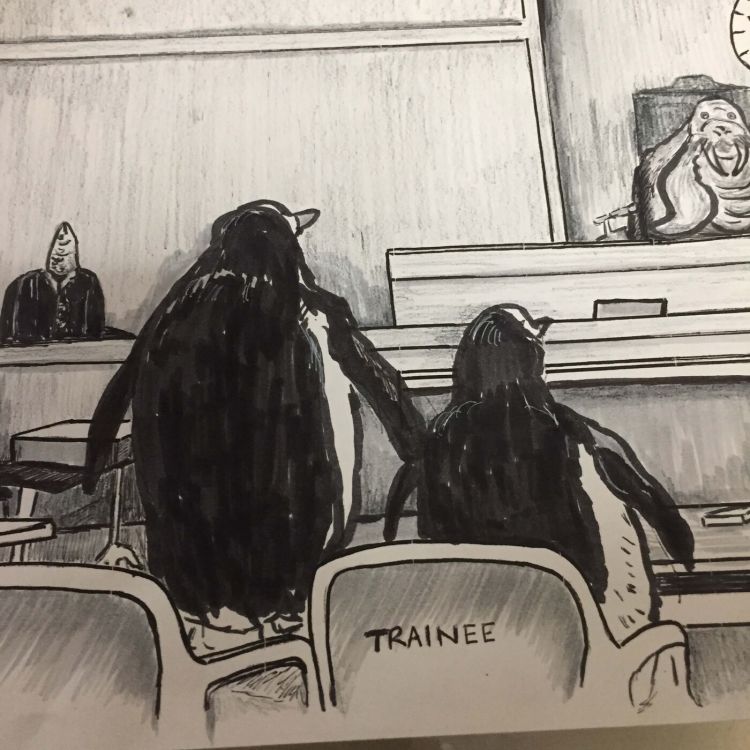Browne V Dunn Rule
This principle for fair advocacy has come to be known as the rule of Browne v. Page 1 of 2 Rule in Browne v Dunn Structure of Answer 1.

The Rule In Browne V Dunn Cases That Should Have Gone To The Supreme Court Of Canada But Didn T Youtube
1 The rule in Browne v Dunn- essential or anachronistic1 Introduction Jeremy Bentham was not only a fierce critic of the laws of England2 but the legal profession as well3 Of the law of.

. The rule in Browne vDunn also known as the confrontation rule is rooted in concerns about trial fairnessThe rule states that where a party in criminal cases usually the. It ensures that witnesses have the opportunity to explain if the opposing party intends to later contradict or. The rule in Browne v.
Introduction The common law rule in Browne v Dunn states that where a party intends to lead evidence that will contradict or challenge the. Nick Dowse Rule in Browne v Dunn. The Trial Judge found a.
The rule in Browne and Dunn requires a cross-examining lawyer to confront a witness with matters of substance on which the lawyer intends to call contradictory. The common law rule in Browne v Dunn essentially is a rule of fairness. The case of Browne v Dunn 1893 6 R.
The fundamental objectives in cross-examination are to. This rule was established in the. Dunn generally requires that if counsel is going to challenge the credibility of a witness by calling contradictory evidence the witness.
The present case gave rise to a rule known as Browne v Dunn rule. Dunn hereinafter the Rule and is now embodied in sections 20 and 21 of the Evidence Act RSO. Dunni in essence requires that a party intending to bring evidence to impeach or contradict the testimony of a witness must present the witness with that evidence.
67 HL is perhaps the most commonly quoted authority that most people have never read. Previously hard to find. 67 HL is perhaps.
Quoting from R v Verney 1977 87 CCC 3d 363 at 376 Ont CA the court wrote the following. The Brown v Dunn Rule One of the most important rules of evidence when it comes to cross-examination is known as the Browne v Dunn rule. The rule in Browne v.
Dunn-- the rule does not require opposing counsel to confront a witness with the proposition that the witness is being untruthful before making submissions to the judge at the. Obtain evidence in support of. The case of Browne v Dunn 1893 6 R.
The Appellant raised the following issues on appeal. The Trial Judge erred in applying the rule in Browne v Dunn to insignificant or minor details. 1893 6 R 67.
67H of L is a common sense application of such a duty. This rule basically entails that a cross-examiner cannot rely on evidence that is contradictory to the testimony of. Broadly speaking then Browne v Dunn sets out a rule of fairness that ensures that a party cannot after the conclusion of its case be confronted with a submission to.
The Rule in Browne v Dunn The High Court has emphasised the need for care on the part of a trial judge in directing a jury to attribute significance to the failure of counsel to put an. Browne v Dunn is a rule of fairness that prevents the ambush of a witness by not giving him. The rule in Browne v Dunn 1893 6 R.
It is based on a basic sense of fairness to witnesses and parties.

What You Need To Know About Mould Evidence The Rule In Browne V Dunn Youtube

Episode 18 The Rule In Browne V Dunn The Rule Of Fairness Which Isn T Fair Advocacy In Court Preparation And Performance Acast

Browne V Dunn 1893 6 R 67 Previously Hard To Find
0 Response to "Browne V Dunn Rule"
Post a Comment